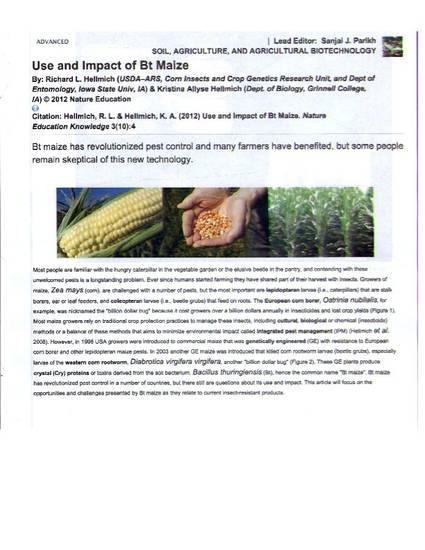
Most people are familiar with the hungry caterpillar in the vegetable garden or the elusive beetle in the pantry, and contending with these unwelcomed pests is a longstanding problem. Ever since humans started farming they have shared part of their harvest with insects. Growers of maize, Zea mays(corn), are challenged with a number of pests, but the most important are lepidopteran larvae (i.e., caterpillars) that are stalk borers, ear or leaf feeders, and coleopteran larvae (i.e., beetle grubs) that feed on roots. The European corn borer, Ostrinia nubilalis, for example, was nicknamed the "billion dollar bug" because it cost growers over a billion dollars annually in insecticides and lost crop yields (Figure 1). Most maize growers rely on traditional crop protection practices to manage these insects, including cultural, biological or chemical (insecticide) methods or a balance of these methods that aims to minimize environmental impact called integrated pest management (IPM) (Hellmich et al. 2008). However, in 1996 USA growers were introduced to commercial maize that was genetically engineered (GE) with resistance to European corn borer and other lepidopteran maize pests. In 2003 another GE maize was introduced that killed corn rootworm larvae (beetle grubs), especially larvae of the western corn rootworm,Diabrotica virgifera virgifera, another "billion dollar bug" (Figure 2). These GE plants produce crystal (Cry) proteins or toxins derived from the soil bacterium, Bacillus thuringiensis (Bt), hence the common name "Bt maize". Bt maize has revolutionized pest control in a number of countries, but there still are questions about its use and impact. This article will focus on the opportunities and challenges presented by Bt maize as they relate to current insect-resistant products.
Available at: http://works.bepress.com/richard_hellmich/133/

This article is from Nature Education Knowledge, 3 (2012); 4.